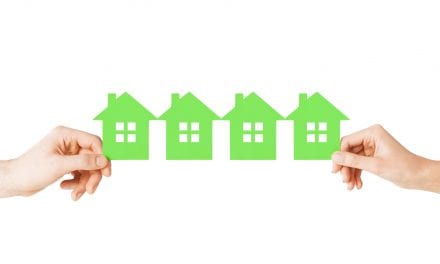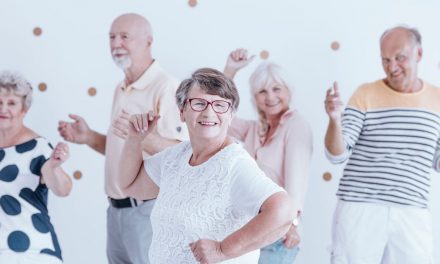By Sara Kyle
As senior living providers we have a responsibility to prevent falls, period! Even prior to someone being identified as a fall risk. Preventing falls is possible, but requires a two pronged approach:
- We must be diligent in preventing falls before they occur.
- We must provide effective offerings to mitigate and reduce the prevalence of recurring falls.
Traditional Approaches
We all struggle to understand the effectiveness of fall risk assessments and the appropriate next steps to prevent a fall.
One common approach in fall risk assessment is to analyze someone’s gait using performance measures such as timed up and go (TUG) or two-minute walk test (2MWT) (or, more recently, VirtuSense). Or we can ask the older adult if they currently fear falling or if they have fallen in the past six months.
Unfortunately, neither approach has shown a strong correlation to falls.
- An abundance of prognostic models on falls risk has been developed, but with a wide range in discriminatory performance. All models exhibited a high risk of bias, rendering them unreliable for prediction in clinical practice.
- The fall risk assessment tools currently used for older people did not show sufficiently high predictive validity for differentiating high and low fall risks.
The most common offering is group exercise classes led by a certified trainer. This is a good start, but the amount of time and frequency of sessions creates challenges because people frequently drop out before reaching peak efficacy, creating low adherence to established protocols.
- A review of 20 studies found that fall prevention exercise programs, which lasted between six weeks and almost two years, had an average adherence rate of only 66%.
- And once the adherence rate of a fall prevention exercise program drops below 70%, the reduction in falls due to that program drops to only single digits.
This same lack of adherence is also common in clinical PT and OT settings. A recent survey of PT and OT clinics found that 40% to 50% of patients do not complete their course of care.
So What Is the Solution?
- Start talking. Discuss evidence-based fall prevention and reduction programs and offerings in active adult and independent living settings. Falls do happen in these settings; however, they are often kept hidden from staff, families, and peers.
- Start investing. Few operators have committed to investing in solutions and programs that can prevent that first fall. If residents move in without mobility or cognition challenges, what are we doing to maintain that quality of life? The advantages of a socially connected community support system, services to reduce the tasks of home ownership, nutritious meals, and amenities to stay healthy are evident, but how do they promote desired functional independence? Solely having the amenities of a fitness center or pool on-site is not enough.
Given the findings from the studies listed, yoga, tai chi, strength training, group exercise, brain fitness and games, education and awareness, aquatic aerobics, adding walking trails and walking clubs, continuous assessments like the Senior Fitness Test, and outsourcing fall prevention professionals are a start. But the science concludes such offerings are not enough.
Why? Because bodies and minds need to be treated TOGETHER to maintain and improve a person’s current state of independence. This concept, well known in therapy circles, is called simultaneous motor-cognitive or dual-task training.
Moving From Good to GREAT
Residents moved into our communities at least in part because they view us, as experts in aging, believing we can improve their physical and cognitive health. We must take more definitive action, which includes finding and implementing new approaches that are rooted in realistic and achievable evidence-based training.
1. Doing Simultaneous Motor/Cognitive Training
Until recently, walking was seen mostly as a purely motor activity. Any issues with walking, such as abnormal gait or tendency to fall, were treated as a physical affliction to be resolved through gait training, balance exercises, and improvements in muscle strength.
However, numerous studies and research teams around the world have demonstrated that successful walking is tightly linked to cognitive capacity, specifically executive function. Executive functions are the mental processes that enable us to plan, focus attention, remember, and handle multiple tasks.
Why is executive function crucial in fall prevention? Because all “real” walking (not in a clinic) involves handling multiple tasks, including motor planning (where am I putting my foot?), obstacle negotiation (avoid that cleaning cart!), working memory (where am I going? what am I getting for lunch?), and divided attention (what did Jane say? is that new carpet?).
Executive function is mostly handled by the prefrontal cortex, which is a part of the brain that experiences significant decline as we age. This decline makes our brains inefficient and unable to handle all these tasks simultaneously. The result is that we are unable to pay attention, our gait quality suffers, and we eventually fall.
How can we fix this? Through combined motor-cognitive training (also known as dual-tasking). Performing motor-cognitive training on a regular basis has been shown to reverse some of the effects of aging, including increasing the number of connections in the prefrontal cortex. This neuroplasticity allows our brains to become more efficient at handling the complex tasks that come with everyday walking. And combined motor-cognitive training has repeatedly been found to be more effective than stand-alone mental or physical training (such as sitting-on-the-couch VR goggles, lifting weights, or tai chi).
2. Implementing Real World Specificity and Walking With a Purpose
As we can see above, residents need motor-cognitive training to address the true root-cause of falls. But since the brain is involved, we need training that correlates with real-world goals. That is, if you want someone to walk, train them to walk. Training them to stand on one leg while counting backwards by three will eventually make them very good at standing on one leg and counting backwards by three.
And that walking? It needs to have a purpose. As laid out by Craig Hillman, senior vice president of GaitBetter, “Studies have shown that for us to get maximum benefit, both cardio and brain health, our walking must have purpose. What does that mean? Number one, we need to push ourselves. You don’t need to run a marathon, but a slightly elevated pace does a world of good. Number two, we need to have a destination. That is, you need to think about where you are going. And talking to a friend? Even better!”
The way I like to think about it? We need to ignore our mothers’ advice and learn to “walk and chew gum at the same time”!
3. Using Individual Progression and Training Protocols
An individual resident’s journey in motor, strength, and cognitive training is highly specific. Just as a personal trainer helps you achieve individual goals, we must look at fall reduction from an individual perspective, not just group training opportunities. To do this effectively, in a way that matches staffing models, we must rely on technology, reporting and data about one’s journey, and progress. Perhaps the same type of clinical care plan approach should be instituted for residents interested in fall prevention.
4. Leveraging Spaces and Expensive Equipment
Creating a space for simultaneous motor-cognitive training may be easier than you imagine. New innovative solutions using both software and hardware are transforming the way we can use equipment beyond just strength or cardio training. Software allows staff to assess, track, and personalize prospective programs. Additionally, on demand and live streaming classes offer in-room, personalized training beyond a staff facilitated group program.
These advances are offering evidence-based solutions for fall reduction even if a community does not have a dedicated or sophisticated exercise and wellness space.
5. Recognizing Staffing Limitations
a. Did you hire a fitness professional well-versed in fall prevention training and methods? This is a rare and specialized position that most companies and organizations do not invest in. However, you can still offer similar programs partnering with solutions at substantially lower price points than a full-time or part-time fall prevention expert.
b. Even if you do have a dedicated fitness expert, the amount of time to manually assess, track, train, and customize individual programs, coupled with a modern database for quick review and push notifications, is incredibly time consuming.
c. Fall prevention is a community approach, not just one staff person or department promoting the cause.
Better understanding what methods and approaches are backed by scientific research and efficacy will save time, dollars, and manpower to achieve the desired result ensuring residents maintain their highest functional level, both physically and mentally, having the best quality of life in our senior living communities.









Trackbacks/Pingbacks